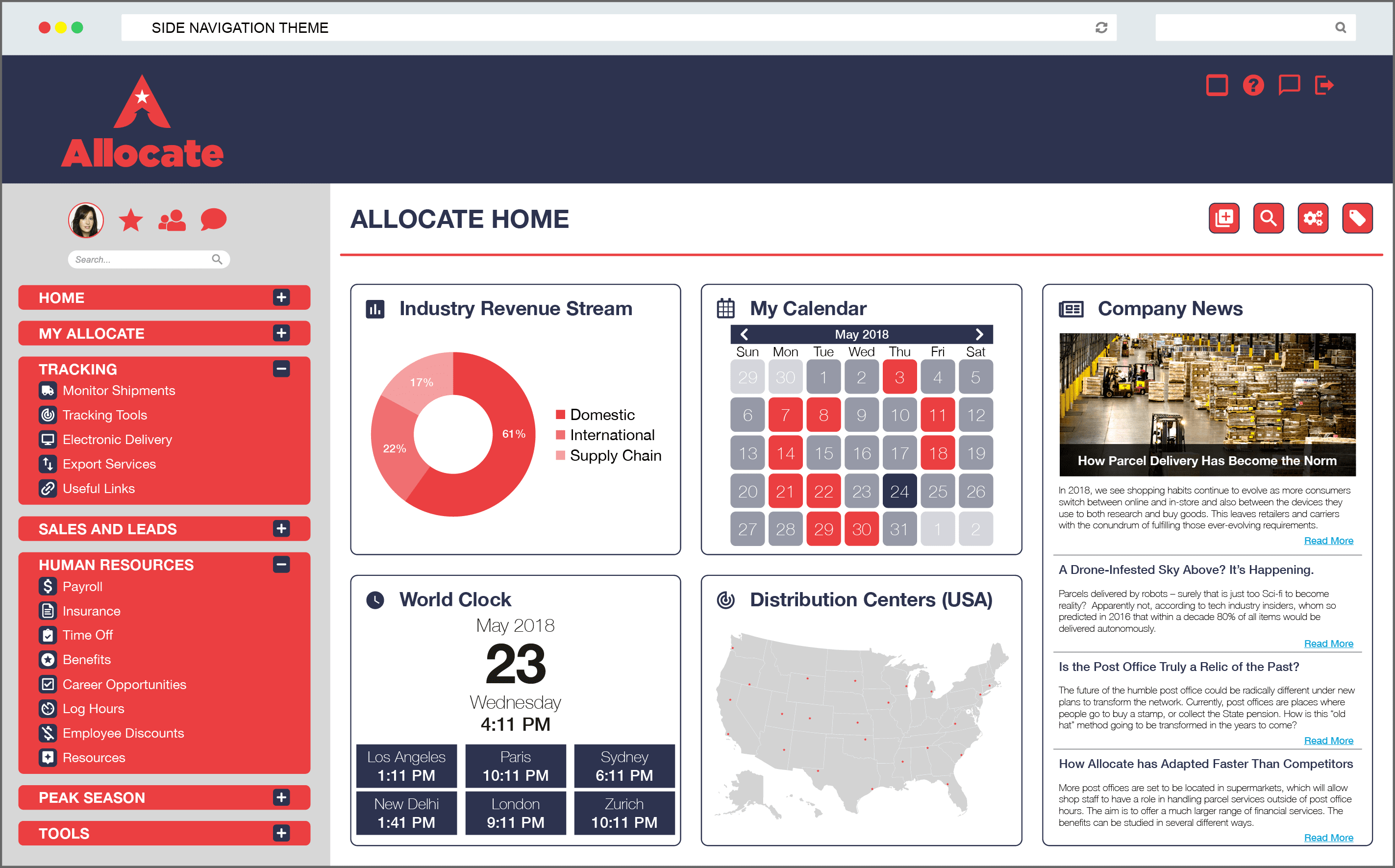An intranet is a computer network for sharing information, collaboration tools, operational systems, and other computing services within an organization, usually to the exclusion of access by outsiders. The term is used in contrast to public networks, such as the Internet, but uses most of the same technology based on the Internet Protocol Suite.

A company-wide intranet can constitute an important focal point of internal communication and collaboration, and provide a single starting point to access internal and external resources. In its simplest form, an intranet is established with the technologies for local area networks (LANs) and wide area networks (WANs). Many modern intranets have search engines, user profiles, blogs, mobile apps with notifications, and events planning within their infrastructure.
An intranet is sometimes contrasted to an extranet. While an intranet is generally restricted to employees of the organization, extranets may also be accessed by customers, suppliers, or other approved parties.Extranets extend a private network onto the Internet with special provisions for authentication, authorization and accounting (AAA protocol).
Benefits
Workforce productivity: Intranets can help users to locate and view information faster and use applications relevant to their roles and responsibilities. With the help of a web browser interface, users can access data held in any database the organization wants to make available, anytime and — subject to security provisions — from anywhere within the company workstations, increasing the employees ability to perform their jobs faster, more accurately, and with confidence that they have the right information. It also helps to improve the services provided to the users.
Time: Intranets allow organizations to distribute information to employees on an as-needed basis; Employees may link to relevant information at their convenience, rather than being distracted indiscriminately by email.
Communication: Intranets can serve as powerful tools for communication within an organization, vertically strategic initiatives that have a global reach throughout the organization. The type of information that can easily be conveyed is the purpose of the initiative and what the initiative is aiming to achieve, who is driving the initiative, results achieved to date, and whom to speak to for more information. By providing this information on the intranet, staff have the opportunity to keep up-to-date with the strategic focus of the organization. Some examples of communication would be chat, email, and/or blogs. A great real-world example of where an intranet helped a company communicate is when Nestle had a number of food processing plants in Scandinavia. Their central support system had to deal with a number of queries every day. When Nestle decided to invest in an intranet, they quickly realized the savings. McGovern says the savings from the reduction in query calls was substantially greater than the investment in the intranet.
Web publishing: allows cumbersome corporate knowledge to be maintained and easily accessed throughout the company using hypermedia and Web technologies. Examples include: employee manuals, benefits documents, company policies, business standards, news feeds, and even training, can be accessed using common Internet standards (Acrobat files, Flash files, CGI applications). Because each business unit can update the online copy of a document, the most recent version is usually available to employees using the intranet.
Workflow: a collective term that reduces delay, such as automating meeting scheduling and vacation planning.

Cost-effectiveness: Users can view information and data via web-browser rather than maintaining physical documents such as procedure manuals, internal phone list and requisition forms. This can potentially save the business money on printing, duplicating documents, and the environment as well as document maintenance overhead. For example, the HRM company PeopleSoft “derived significant cost savings by shifting HR processes to the intranet”. McGovern goes on to say the manual cost of enrolling in benefits was found to be US$109.48 per enrollment. “Shifting this process to the intranet reduced the cost per enrollment to $21.79; a saving of 80 percent”. Another company that saved money on expense reports was Cisco. “In 1996, Cisco processed 54,000 reports and the amount of dollars processed was USD19 million”.
Enhance collaboration: Information is easily accessible by all authorised users, which enables teamwork. Being able to communicate in real-time through integrated third party tools, such as an instant messenger, promotes the sharing of ideas and removes blockages to communication to help boost a business’ productivity.
Cross-platform capability: Standards-compliant web browsers are available for Windows, Mac, and UNIX.
Built for one audience: Many companies dictate computer specifications which, in turn, may allow Intranet developers to write applications that only have to work on one browser (no cross-browser compatibility issues). Being able to specifically address one’s “viewer” is a great advantage. Since intranets are user-specific (requiring database/network authentication prior to access), users know exactly who they are interfacing with and can personalize their intranet based on role (job title, department) or individual (“Congratulations Jane, on your 3rd year with our company!”).
Promote common corporate culture: Every user has the ability to view the same information within the intranet.
Immediate updates: When dealing with the public in any capacity, laws, specifications, and parameters can change. Intranets make it possible to provide one’s audience with “live” changes so they are kept up-to-date, which can limit a company’s liability.
Employee Engagement: Since “involvement in decision making” is one of the main drivers of employee engagement, offering tools (like forums or surveys) that foster peer-to-peer collaboration and employee participation can make employees feel more valued and involved.